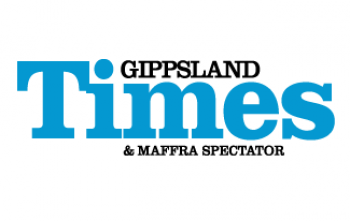FINANCIAL security, employment and a healthy environment all impact on the mental health and wellbeing of people in Gippsland, including the LGBTIQA+ community.
Gippsland Primary Health Network’s (Gippsland PHN) two new Priority Issues Papers address these factors and more in the two new snapshots – Mental Health and Wellbeing – Prevention and Promotion and LGBTIQA+ Health and Wellbeing.
Gippsland PHN Acting CEO, Angela Jacob, said the issues papers were an important part of the organisation’s work in health planning.
“Health planning is one of our core functions and helps us identify and prioritise health needs,” Mrs Jacob said.
“The two new priority issues papers provide valuable data on mental health and wellbeing across the region.
“This assists in commissioning health services and supporting access to services for vulnerable populations. Our aim is for the commissioning process for health services in the region to be informed by best practice and through consultation with people who have lived experience.”
The first issues paper reveals 7.9 per cent of adults in Gippsland ran out of money to buy food in the past year compared to the Victorian average of 5.9 per cent while Gippsland is also the second-lowest of all Victorian Primary Health Networks (PHNs) for labour force participation with 54.1 per cent of working age people in employment compared to 66.8 per cent across Victoria.
The paper also showed 12.5 per cent of adults in Gippsland rarely feel valued by society compared to 11 per cent in Victoria with the Latrobe Local Government Area recording the highest figure in Victoria of 18.1 per cent.
Other key statistics showed:
23 per cent of students in year 7-9 in Gippsland report being bullied (17.5 per cent in Victoria);
32.8 per cent of school leavers participated in higher education in Gippsland (57.5 per cent in Victoria);
81.2 per cent of young people (aged 16 years) in Gippsland participate in secondary school education (88.5 per cent in Victoria);
All Gippsland LGAs have a high rate of family violence incidents, compared to the rest of Victoria especially in East Gippsland (139 per cent higher), Latrobe (134 per cent higher), Wellington (105 per cent higher) and Bass Coast (50 per cent higher), and;
Around two in five females in Gippsland feel safe walking alone at night after dark, compared to four in five males.
The second issues paper looks at the impacts on the health and wellbeing of the LGBTIQA+ community in Gippsland including mental health, health care and service related issues.
The paper highlights that LGBTIQA+ people are more likely to face stigma and discrimination; are at higher risk of poor mental health and suicidal behaviours; and need improved and safe access to appropriate services with a well-trained workforce.
There is enormous diversity within the LGBTIQA+ communities and some carry an even greater burden, including Aboriginal and/or Torres Strait Islander peoples, trans and gender diverse people (especially young trans people), and people with an intersex variation.
Mrs Jacob encouraged feedback and discussion on the priority issues papers.
“We rely on information from people in Gippsland to help us work on what is most needed,” she said.
The issues papers are available on the Gippsland PHN website. Feedback and discussion about the content of the papers is welcome by emailing tellgippslandphn@gphn.org.au






